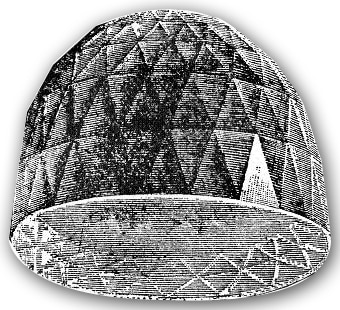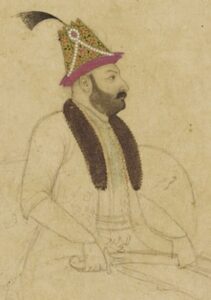
This is the kind of story that would make a great Indiana Jones movie – solving the mystery of the Great Mogul Diamond. Its last owner murdered, the famed gem has not been seen for centuries and to this day its whereabouts remain unknown. Still, theories swirl about its fate. Who stole the gem? Is it now part of someone’s private collection? Perhaps it is truly lost, patiently waiting somewhere on this earth to be re-discovered. Or maybe it has gone under the knife, cut down to disguise its identity.
The Great Mogul Diamond’s story begins around 1650 with its discovery as a rough diamond, most probably in the Kollur Mine in the Golconda region of southern India. Weighing in at a whopping 787 ½ carats, the diamond’s impressive size made it a perfect gift of diplomacy when Emir Jemla, a very wealthy general, used it in seeking an alliance between two great families. Presenting the rough diamond to Shah Jehan, Emperor of India, Jemla described it as “that celebrated diamond which has been generally deemed unparalleled in size and beauty.”1
A Venetian lapidary named Ortensio Borgio was assigned to cut the stone. It is believed that the Great Mogul Diamond exhibited several inclusions. Rejecting the idea of cutting the diamond into several fine stones, the hapless Borgio decided to address the inclusion problem by grinding away at it until the unwanted flaws were gone. Much to the horror of the Emperor, Borgio’s work yielded very poor results, including a great loss of weight. Showing great restraint, Shah Jehan spared Borgio’s head, instead fining him 10,000 rupees (all the money he had) for his ineptitude.

Around 1665 the Shah’s son, Shah Auranf-zeb, showed the stone to the famous jeweler and world traveler Jean Baptiste Tavernier. At that time Tavernier wrote in his Six Voyages: “The first piece that Akel Kahn placed in my hands was the great diamond, which is rose cut, round and very high on one side. On the lower edge, there is a slight crack and a little flaw in it. Its water is fine, and weighs 319-1/2 ratis, which makes 280 of our carats, the ratis being J of a carat.”2
Later, the Great Mogul Diamond became part of the spoils of war when India was invaded and Delhi sacked by the Persian ruler Nadir Shah. Nadir Shah returned with the stone to his home in Isfahan in 1739. However, Nadir Shah’s ownership proved shorted-lived. He was assassinated in 1747 and the stone disappeared.
There are many legends regarding its fate. Some believed it to be the stone from which the Koh-i-noor was cut, or perhaps the Darya-ye-noor, but most popularly it is speculated to be the Orlov Diamond because its bluish tinge and rose cut are similar to the Great Mogul Diamond. A more probable explanation is that it was stolen and cut into smaller gems to disguise its origin. No one knows for sure. Where are you, Indiana Jones?
Sources
- Orpen, Mrs. Goddard. Stories about Famous Precious Stones Boston: D. Lothrop Company, 1890.
- Streeter, Edwin W. The Great Diamonds of the World: Their History and Romance London: George Bell and Sons, 1882.
Gems & Gemology: The Quarterly Journal of The Gemological Institute of America.
The Great Mogul:
- Spring 1941, The Great Mogul; Star of South Africa (or Dudley), p. 143, 2pp.